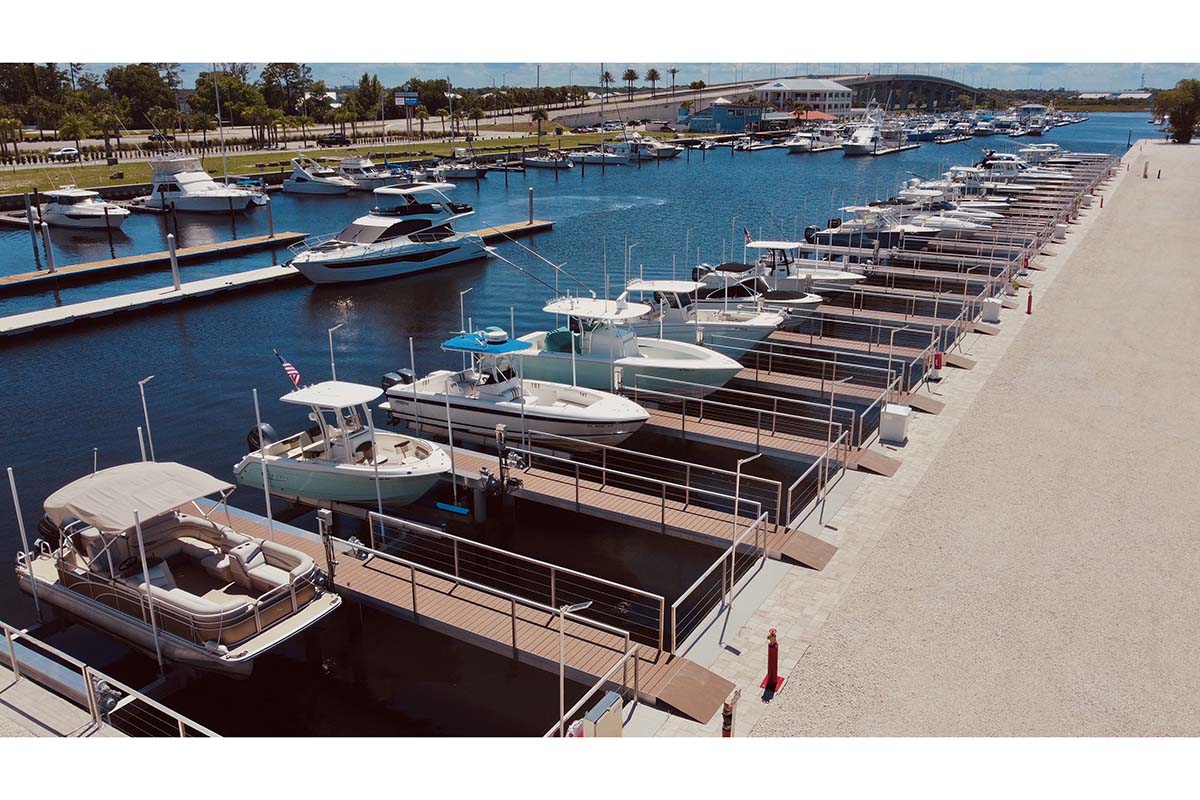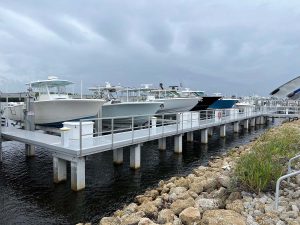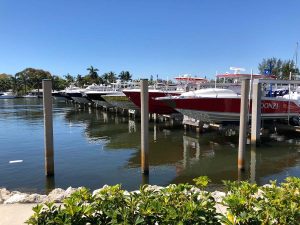
The Rise of Boat Lift Marinas
Published on June 29, 2023Boat lifts are not new. The idea of pulling a boat into a slip and raising it out of the water has been around for decades, mainly for residential purposes, but eventually expanding into use by marinas. Early on, marinas were installing a handful of lifts either at the request of boaters or as an added amenity, but today there’s a new concept taking hold: the boat lift marina.
According to Michael Shanley, president of Golden Marine Systems LLC, Bill Golden, founder, and owner of Golden BoatLifts, started turning in-water slip marinas into boat lift marinas 25+ years ago throughout the country. However, about three years ago, MarineMax, a leading boat dealer with more than 78 dealerships and 57 marinas worldwide, adopted the idea into its marinas, and from there the trend has taken off. “As these facilities came online and the press picked it up, marina groups like Safe Harbor Marinas and Suntex realized the benefits, and the trend caught fire,” said Shanley. Golden has recently completed boat lift marina projects in Fort Myers, Jacksonville, Miami, Miami Beach, and Stuart, Florida, and has seen such facilities spring up along the East Coast.
Business Research Insights estimates that the boat lift market on a global scale and combining residential and commercial applications, will reach more than $192 million by 2028 with an annual compound growth rate of 3.5%. Boat lifts have proven to be money savers for both boaters and marinas, as well as providing a host of other benefits, leaving little wonder why they are gaining in popularity.

Responding to Customers
While the benefits of boat lifts to a marina operation can be many, the drive to install them generally comes from customers. Boat lifts resolve some common boater complaints. When a boat is stored out of the water, annual service—hauling, washing, blocking, and painting—becomes non-existent. No vegetation grows on a boat when it’s dry. A boat lift preserves the quality of the boat, which amounts to cost savings in repair and maintenance and adds to the longevity or resale value of the boat.
The number one reason customers want a boat lift, according to Chris Simon, vice president of marina operations and portfolio asset management for Winward Marina Group, is convenience. “The majority of our marinas are drystacks and boaters are at the whim of the marina operations. For fishermen wanting to head out early or boaters coming in after closing, a drystack doesn’t work,” he explained. Boatlifts give people access to their boats whenever they want.
Simon is becoming an expert in boat lift marinas. The Winward Marina Group has purchased 11 marinas over the past few years and has been steadily adding boat lifts to the properties. They initially added 25 lifts with a capacity of 25 to 40,000 lbs. as part of the $1.5 million renovation of Jacksonville Beach Marina. Plans are in place to add an additional 28 boat lifts this summer, which will mean boat lifts make up about 30% of the marina’s overall storage. Similarly, the group added 49 boat lifts to its marina in Stuart, Florida, and has plans to add 50 more.
Simon said while his team has talked about making their marinas all boatlifts, he recognizes the value in offering a diverse array of storage options. “Diversifying our product offering attracts different segments of boaters and accommodates boats in different seasons of the year,” Simon said. “The boat lift crowd generally has larger vessels that they’d keep behind their houses if they could. A lift is the next best thing.”
Adding boat lifts reduces the amount of space needed for a dry stack operation, is safer than transporting boats via forklift or travel lift, and puts less wear and tear on the boats. There are environmental benefits to a boat lift as well. When boats aren’t sitting in the water they cannot leach anti-fouling paint, do not impede the natural flow of the water, or interfere with water habitats. Boat lifts can also hold up well in storms, although it’s never recommended to keep a boat in a lift during hurricanes. “We had an installation in Daytona where after a tropical storm the whole marina was basically gone but the boat lifts we installed were still in place,” said Shanley.
Simon said adding boat lifts to a marina diversifies the customer base and brings in a higher premium, which pays for the initial investment within one and a half to two years. “At the end of the day, adding boat lifts is a business decision. We plan to continue to grow the boat slip segment slowly, so we don’t oversupply the demand, but I already have 15 on a waitlist for our phase two construction,” he said.
Boat Lift Capabilities
Boat lifts have been regularly re-engineered to meet greater demand, meaning there are lifts today to meet nearly any boat size and type including catamarans and trimarans. There are front and side mount lifts, shallow water lifts, and PWC lifts that can be manual, electric, or hydraulic powered. “We have a lift that can accommodate boats up to 120,000 pounds and I’m confident we can engineer to take on even larger ones. But the typical lift is a 4-post lift mounted to all four piles, that has a 20 to 60,000-pound capacity,” said Shanley.
When considering adding boat lifts, marinas need to consider their soil conditions, pile size, weight, and type of typical boats at the facility, as well as how much tides fluctuate and how open the area is to storms and waves. Boat lifts do require permits, but Shanley said they are typically easier to permit than docks. He commented that 30 to 40-amp electric is generally required but it depends on the size of the lift, which depends on the size of the boat.
Simon echoed this, “Boat lifts don’t draw immense amounts of power, but your power requirements may have to rise. I don’t see that as a downside though. Upgrading your power will help attract different customers, so it may be a necessity for the lifts but helps the entire marina,” he said.
As with any project, it’s best to meet early on with the permitting agency to ensure lifts will be approved. The length of time it takes to receive a permit varies by state and locality but once the permit is in hand, Shanley said the work proceeds fairly quickly. He estimates a 200-slip marina that wanted to install lifts in all slips would take about six to eight months to complete.
For now, most facilities are putting boat lifts into just a portion of the overall marina, but Shanley said once a few are installed and boaters see how convenient and efficient they are, more customers start to request them. Marina operations can be set up so boaters pay for the lifts themselves with the caveat it becomes the property of the marina if the customer leaves, or it can be paid for through higher slip lease rates. The target market for boat lifts is generally smaller boats on inland waters, but as Marine Max has proven, there’s interest in coastal waters where boat lifts in places like Miami are catering to full-fledged yachts.
With marinas trending towards becoming more resort-like with services and amenities to appeal to a wider boater audience, from overnight transients to service customers to long-term leasers, boat lifts may just be a perfect added profit center.
| Categories | |
| Tags |






